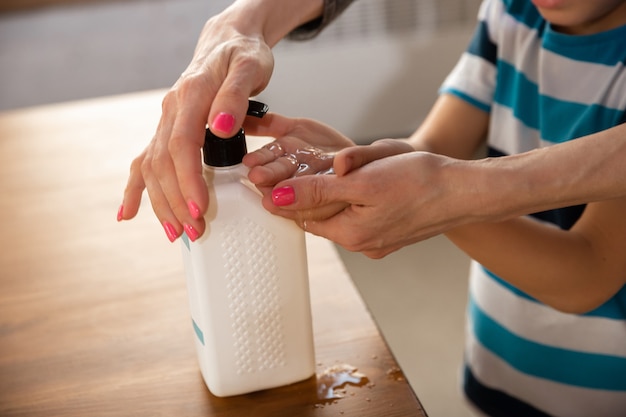
To help stop the spread of the current pandemic caused by the new coronavirus, using hand sanitizer frequently is a practical solution for everyone. Hand sanitizer is effective in preventing the highly contagious COVID-19 disease.
However, due to high demand, finding hand sanitizer in stores can be difficult. Retailers are often short on supply. To tackle this issue, you can make your own hand sanitizer at home with just a few ingredients.
While washing your hands with soap and water for at least 20 seconds is the best method to reduce the risk of COVID-19, it’s not always practical when you’re on the go. In such cases, an alcohol-based hand sanitizer with at least 60% alcohol, as recommended by the CDC, is the next best option.
Here’s a step-by-step guide to make your own DIY hand sanitizer to help protect against diseases like the coronavirus.
### Making Hand Sanitizer at Home
#### Ingredients:
– Isopropyl or rubbing alcohol (91-99% alcohol volume)
– Aloe vera gel or glycerin
– Essential oil (e.g., lavender, tea tree oil) or lemon juice for fragrance
– A clean container for mixing
– An airtight container for storage
– A whisk or spoon for mixing
#### Process:
1. Mix 2/3 cup of isopropyl or rubbing alcohol and 1/3 cup of aloe vera gel or glycerin in a clean container.
2. Use a whisk or spoon to blend the ingredients thoroughly.
3. Add five drops of an essential oil or lemon juice for fragrance (optional).
4. Store the mixture in an airtight container to prevent the alcohol from evaporating. A squeeze or pump bottle works best, making it easy to use anytime.
The key to making an effective hand sanitizer is maintaining a 2:1 ratio of alcohol to aloe vera, ensuring the final product contains around 60% alcohol, which is necessary to kill most germs according to the CDC.
### Tips for Effective DIY Hand Sanitizer:
– Wash your hands before starting the process.
– Make the sanitizer in a clean space, wiping down surfaces with a diluted bleach solution beforehand.
– Use undiluted alcohol.
– Use clean mixing utensils.
– Ensure the mixture is well-blended and smooth.
– Avoid touching the mixture with your hands until it’s ready to use.
To prepare a larger batch, the WHO suggests a formula using isopropyl alcohol or ethanol, hydrogen peroxide, glycerol, and sterile distilled or boiled cold water.
### Is DIY Hand Sanitizer Safe?
DIY hand sanitizer is recommended only when commercial sanitizers are unavailable. It’s crucial to follow the recipe correctly to ensure safety. Frequent hand washing with soap and water is preferable. DIY hand sanitizer is not recommended for children due to the risk of improper use.
### How to Use Hand Sanitizer:
1. Apply the sanitizer to the palm of one hand.
2. Rub your hands together, covering all surfaces, including between your fingers, until dry.
3. If your hands are dirty or greasy, wash with soap and water first, then use the sanitizer.
4. Rub for at least 30 to 60 seconds to kill most germs.
### Effectiveness of Hand Sanitizer:
According to the CDC, hand sanitizers with at least 60% alcohol can reduce microbes significantly. However, they might not eliminate all germs and are less effective on greasy or visibly dirty hands.
### Hand Washing vs. Hand Sanitizer:
Both hand washing and hand sanitizers have their roles. Washing hands with soap and water is typically more effective, especially when hands are dirty or greasy. Hand sanitizer is useful when soap and water are not available.
### How to Wash Your Hands:
1. Use clean, running water (warm or cold).
2. Wet your hands, turn off the tap, and apply soap.
3. Lather and scrub your hands for at least 20 seconds.
4. Rinse well and dry with a clean towel or air dry.
### DIY Hand Sanitizer Effectiveness:
While homemade hand sanitizers can be effective, commercial hand sanitizers are generally more reliable due to quality control. For safe and effective DIY sanitizer, follow the recipe and guidelines carefully. Use it only when commercial options or soap and water are unavailable.